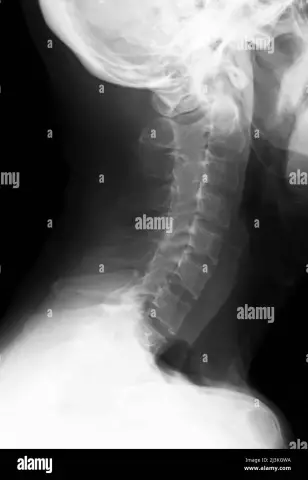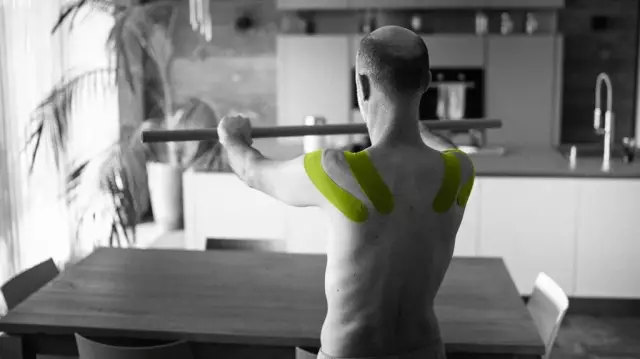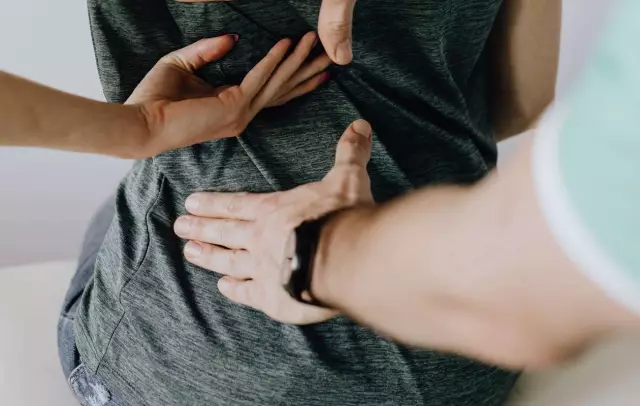- Author Rachel Wainwright [email protected].
- Public 2023-12-15 07:39.
- Last modified 2025-11-02 20:14.
Ankylosis

Ankylosis is a disease resulting in complete immobility of the joint. It arises as a result of pathological changes occurring in the joint. As a rule, the impetus for the development of the disease is injury, arthritis or arthrosis.
During the ankylosing of the affected joint, it first becomes difficult to move, and over time, it completely loses its mobility. Ankylosis of the joints are bone with the growth of bone tissue and fibrous with the growth of connective fibrous tissue.
Signs of ankylosis of the joints
Ankylosis and contractures have similar symptoms. The most important symptom of ankylosis is limited joint mobility. Other symptoms depend mainly on the position in which the fixation occurred. For example, if ankylosis of the knee joint occurs when the leg is bent at an angle, then the patient will not be able to walk. If the leg is fixed in a straightened state, then the patient will be able to walk and work quite freely.
With fibrous ankylosis of the joint, the most important symptom is its soreness when performing rocking movements. With bone ankylosis, the patient usually does not experience pain.
Causes of ankylosis
There are several causes of ankylosis and contracture. The main causes are severe intra-articular fractures resulting from a violation of the articular surfaces, inflammatory changes in the joints (arthrosis and arthritis), open joint injuries, in which a prolonged purulent process is observed, leading to degeneration of the cartilaginous cover of the articular surfaces and the proliferation of connective fibrous or bone tissue.
Also, the occurrence of ankylosis of the joint is often promoted by a long stay in a cast.
Diagnosis of ankylosis
If ankylosis and contracture are suspected, the patient should contact a surgeon or traumatologist who will analyze the medical history, ask the patient the necessary questions and determine the degree of mobility of the affected joint. In order to clarify the diagnosis, the patient will be sent for an X-ray of the joint, as well as computed tomography or magnetic resonance therapy.
Ankylosis treatment

Depending on the degree of joint damage, the treatment of ankylosis can be conservative or operative. With this disease, the earliest possible diagnosis and treatment is of great importance.
Conservative treatment of ankylosis is aimed at restoring joint mobility, relieving pain during movement and increasing muscle tone. For this purpose, without fail, the patient is prescribed remedial gymnastics aimed at rhythmic tension of the sore leg or arm in a plaster cast, manual therapy, and muscle massage. Drug treatment involves the use of non-steroidal anti-inflammatory drugs, hormones and analgesics injected into the joint cavity.
Physiotherapy is widely used to treat ankylosis and contracture. Electrophoresis, UHF, CMT effectively help to remove inflammation, swelling, relieve painful sensations in the joints and restore its mobility.
Fibrous ankylosis is treated with specially designed rocking movements (with preliminary anesthesia). With fibrous ankylosis, surgical treatment is predominantly indicated. A common use of arthroplasty, in which the articular ends of the bones are separated and new articular surfaces are formed. Special plastic tissue pads are placed between the new articular surfaces. The inconvenient position of the limb with ankylosis is eliminated by straightening it (osteotomy). In especially severe cases, a complete joint replacement (arthroplasty) is possible.
Prevention of ankylosis
To avoid the development of this disease, it is necessary to pay special attention to the diseased joint. It is advisable to start its complex treatment and treatment of intra-articular fractures as early as possible with the use of internal and external drug therapy and therapeutic exercises aimed at developing muscles and a sore joint.
To prevent the onset and development of arthrosis in adjacent joints with ankylosis, regular physical education, physiotherapy, massage therapy and spa treatment are recommended.
To avoid functionally disadvantageous ankylosis, proper immobilization of an injured limb is recommended.
The information is generalized and provided for informational purposes only. At the first sign of illness, see your doctor. Self-medication is hazardous to health!






